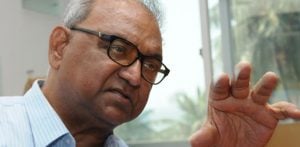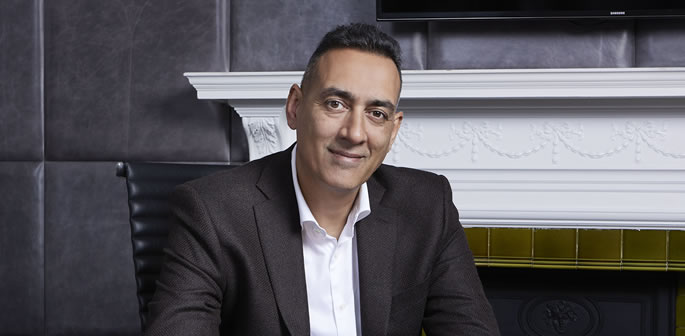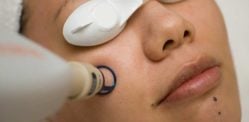"This technique leaves little to no scarring on the scalp"
Nadeem Khan is the CEO and Founder of Harley Street Hair Clinic, which specialises in hair transplants.
His entrepreneurial journey began when he became the first person in the UK to have an FUE hair transplant in 2015.
Nadeem later quit his legal career to set up his clinic, with the intention of providing better-quality hair transplants to the UK and in 2016, Harley Street Hair Clinic was established.
Using cutting-edge technology, the clinic has had celebrity clients, including Wayne Rooney.
In South Asian communities, hair loss concerns can have emotional and social impacts.
Discussions about hair loss are still taboo and Nadeem wants to normalise such conversations in South Asian communities.
Nadeem spoke to DESIblitz about how he founded Harley Street Hair Clinic and what can be done to normalise hair loss conversations within the South Asian community.
Explain the process of your hair transplant
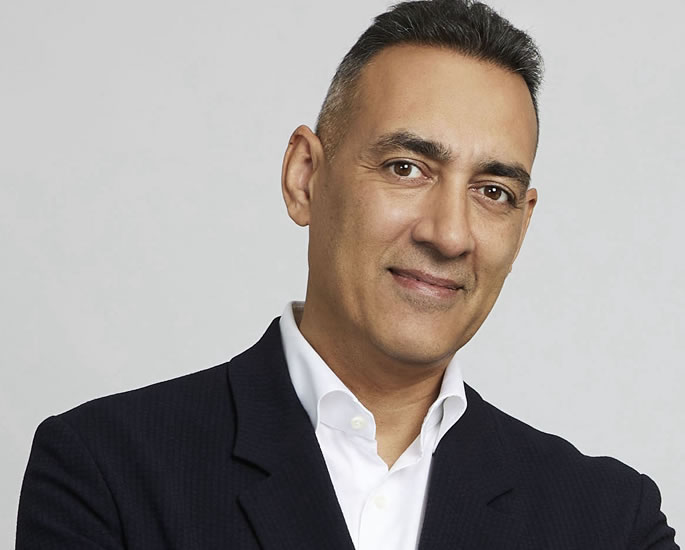
I was the first person from the UK to have a FUE (Follicular Unit Extraction) hair transplant in 2015, after suffering from hair loss for years.
I actually had great hair in my childhood and in my twenties so I never really worried about losing my hair during that time.
My hair started thinning when I was around 28-29 years old but I just thought it was due to stress at the time.
Then in my early thirties, when I was around 32-33, my hair loss progressed quite quickly which came as quite a shock.
At the time I was working in intellectual property law and one of the projects I was working on was about protecting the rights of the new revolutionary FUE hair transplant procedure.
Through this, I gained a really deep understanding of the new technique, why it differed and was better than previous hair transplant techniques, but also the barriers to medically advancing the technique for giving patients wider access to it.
During that time the FUE technique had never been performed in the UK before, but I was able to attend many seminars and meet the international scientists that were working on developing it.
A FUE hair transplant essentially replaces lost or thinning hair by taking healthy follicles from a donor area of the head (usually back and sides) and transplanting them to a thinning area of the head (such as the hairline or crown).
To explain it in more detail, surgeons first work to extract a number of hair grafts typically in groups of between one and four hairs from the sides of the head or back of the neck, using a specialised extraction instrument less than 1 mm in diameter.
These follicles are then transferred to the recipient area of the scalp (the balding area) and implanted using a powerful stereo microscope.
The surgeon takes great care to implant the hairs at the correct angle to mimic the old hair, just as it would naturally grow, to ensure the newly transplanted hair blends perfectly and resembles a natural hair pattern.
This technique leaves little to no scarring on the scalp, minimal bleeding, and recovery is usually within seven days with almost no side effects. The results are of a very high quality with a natural-looking finish.
Prior to the development of this modern FUE technique, the outdated technique used for hair transplants, but which is still used in many clinics today, is called FUT (Follicular Unit Transplantation).
This is otherwise known as strip surgery as the surgeon removes an entire strip of donor skin from the back of the head and extracts hair follicles from this strip rather than directly from the scalp.
This leaves distinctive and noticeable scarring and bleeding on the scalp which can take weeks to heal.
Why did you keep your transplant a secret from your parents?
There was a lot going on at the time of my transplant as I was also setting up my clinic, and with my family living elsewhere, I didn’t tell them about it until a bit later.
However, I would definitely encourage people to have more open conversations with their families about their hair loss journeys.
Why did you decide to go into the hair transplant industry?

I was working in intellectual property law and had a keen interest in the projects about FUE transplants.
After I had my transplant and saw the incredible results the new technique could generate alongside the minimal scarring and side effects – I decided I wanted to help others like me and improve access to the technique.
I wanted to enable people in the UK to get this treatment within the UK itself without having to travel abroad or continue to get the outdated FUT treatments which were leaving them with scars, bleeding and long recoveries.
“Before I worked in law, I was an entrepreneur and set up businesses in the retail and software industries.”
I, therefore, brought together my entrepreneurial experience with my passion for hair loss and hair restoration by setting up Harley Street Hair Clinic, offering world-leading hair restoration treatments, including FUE transplants.
Alongside opening and running my own clinic, I’ve also been involved with global scientists in developing and funding the FUE technique further, including making improvements to tooling and instrumentation that are now standard practice internationally.
Were there any difficulties in setting up your clinic?
I didn’t encounter any major difficulties at the start when setting up the clinic.
But an ongoing difficulty is around the education of patients, and helping them to understand how to achieve the best results possible.
What makes Harley Street Hair Clinic stand out from other hair clinics in the UK?

We were the first clinic in the UK to offer FUE hair transplants and we only perform this type of hair transplant as it gives our patients the most natural and realistic results.
Our clinic is a world-leading facility, renowned for our surgeons’ leading results – in fact, two of our surgeons Dr Albena Kovacheva and Dr Greg Vida are among the top 20 hair transplant surgeons in the world.
We also offer a no-obligation consultation where we work closely together with patients to find out their hair loss patterns, their history, any challenges and issues they’re facing, and what results they desire.
We consult on the right treatment for them and whether they’re even suitable to have a hair transplant – or if they’re not ready for it just yet.
“We want to ensure the best possible results and outcomes for the patient, not the clinic.”
As well as offering male and female hair restoration treatments to people of all ethnicities, we also conduct transgender hair surgery to reshape hairlines for female-to-male transitions and male-to-female transitions.
In order to help people across the UK keep track of their hair journey, earlier this year we also launched the world’s first hair tracking app.
This enables anyone at any time and any place to upload pictures of their hair to see how it changes over time, and directly message our clinic’s world-leading doctors who can provide free tailored guidance about their hair.
Hair Track is available to download via the App Store for Apple users and Google Play Store for Android users.
How do South Asians respond to hair loss treatments?
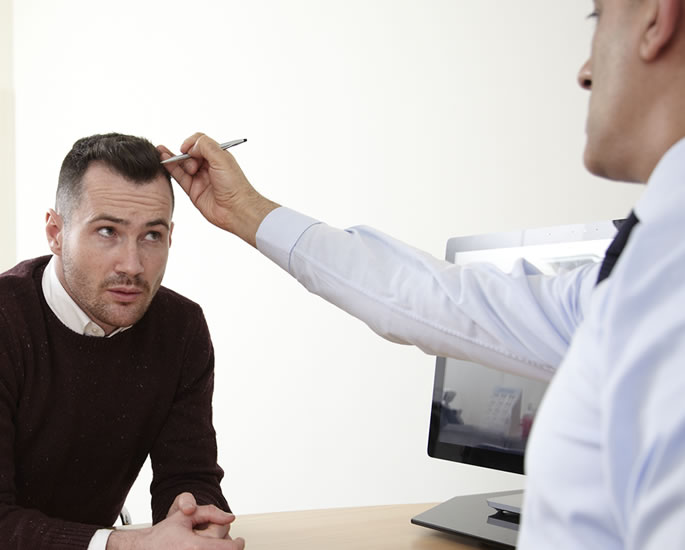
Our clinic has treated all ethnic groups for many years and we’ve researched the differences in hair types to ensure we’re giving them the best possible results – whether that’s with hair loss medications, pigmentation treatments, or hair transplants.
Hair loss medications, such as finasteride or minoxidil, can slow down the hair loss process.
Evidence suggests these work uniformly across ethnicities, where they’re able to rejuvenate the hair shaft and slow down hair loss, particularly at the crown of the head.
But they will not regenerate hair follicles which have already been lost or damaged.
When it comes to hair transplants, South Asians respond well to the treatment. We’ve had many patients who’ve had brilliant results with a natural full head of hair after suffering from hair loss, alopecia, or pattern baldness.
“When conducting a hair transplant on South Asians there are a few important considerations compared to caucasian hair.”
Asian hair has the largest cross-sectional diameter or calibre (thickness) of hair compared to other ethnicities, so we have to ensure we’re using the right punch size of tools in the transplant.
These thick hair shafts along with the fact that their hair tends to be straighter means the donor hair must be harvested more carefully.
If the donor hair is overharvested, this will be much more noticeable, especially with the higher contrast in skin and hair colour in South Asians.
What types of hair loss are Asians most at risk of?
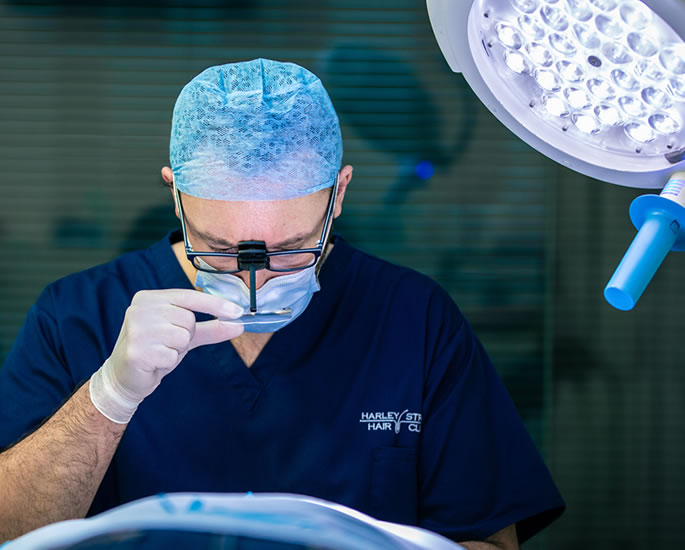
The type of hair loss Asians are typically most at risk of is traction alopecia. This is a form of hair loss caused by excessive tension on the scalp.
This isn’t because of any ethnic disposition, but more about the hairstyles typical to the community.
For example, this type of hair loss is mostly caused by wearing the hair in tight hairstyles such as braids, plaits or buns.
The type of hair loss that is more genetically determined and therefore can be affected by factors such as ethnicity is androgenic alopecia.
However, there is a greater incidence of this type of hair loss in Caucasian men, followed by Asians and then Africans.
Why do you think hair loss is taboo in South Asian communities?

In South Asian communities, hair is particularly linked to cultural identity and beauty standards, where many value not just a head of hair, but luscious, flowing, and thick healthy hair.
“In the media and in South Asian culture, hair is seen as a symbol of good health and attractiveness.”
In many Bollywood films, you see that women cultivate rich and flowing hairstyles as opposed to shorter cuts, and men tend to prefer thick, dense, and flowing hair.
While hair loss can have emotional and social impacts, it’s rarely been discussed openly in South Asian society and when it has, it’s almost always discussed in a comedic fashion.
However, despite the availability of surgical options in South Asia for hair loss being historically limited, there has recently been a rapid explosion in hair restoration treatment.
There’s also been the start of great changes in perceptions and the ability to talk of hair loss concerns, but there’s still more to do to break down these taboos.
Why do you think hair loss/transplants are hardly discussed among women in comparison to men?
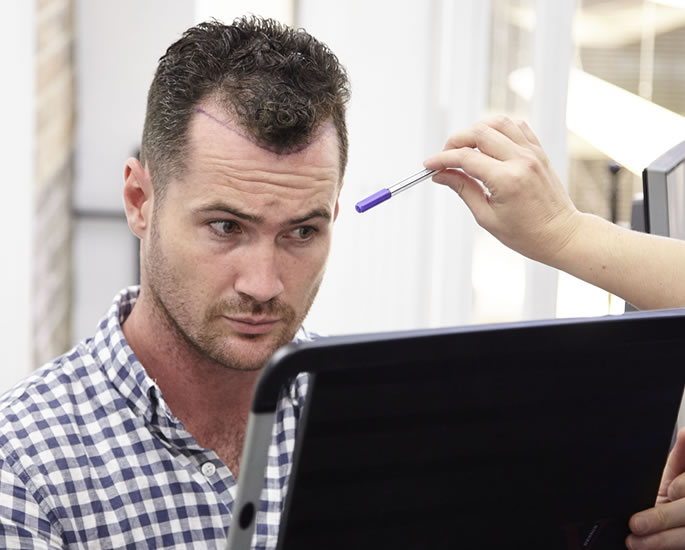
I actually think there is a taboo and hesitancy to discuss hair loss and transplants among both men and women, not just among women.
We conducted research into over 2,000 UK adults this year which found that three-quarters of men (73%) and nearly two-thirds of women (61%) in the UK are experiencing some form of hair loss.
Despite it being so commonplace, there is still a huge taboo among both genders, with over a quarter (27%) of all people losing their hair being embarrassed about it, and a quarter (24%) feeling that they have absolutely no one they can talk to about their concerns.
Hair loss is also affecting people’s perceptions of themselves, causing nearly half (43%) of women and over a third (35%) of men to feel less attractive.
This has triggered a third (33%) of women to feel less feminine and nearly one in ten (7%) men to feel emasculated.
What things are you doing to normalise hair loss conversations?
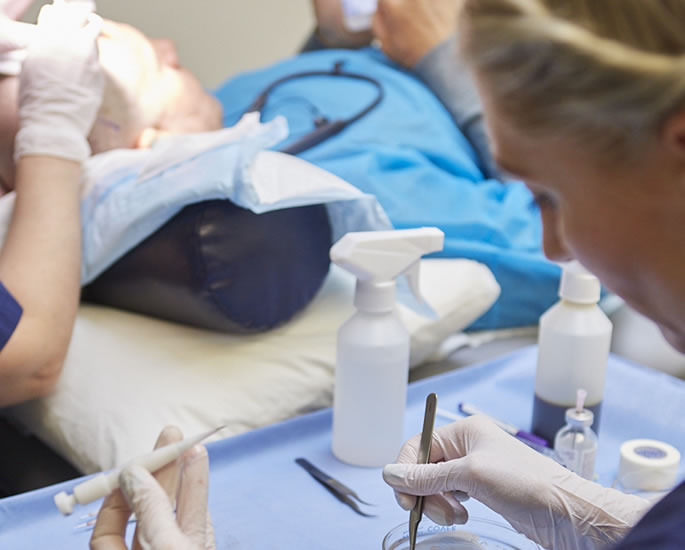
We can only raise awareness of hair loss by encouraging more open discussion about it, and spreading expert information to help break down the taboos within communities.
“By not openly discussing hair loss, there is a lack of education and awareness needed on how to help with it.”
Many South Asians therefore turn to ineffective advice and treatments based on myths and remedies.
But now people have greater options to help with hair loss than ever before due to the advancement of technology, and safe, effective restoration procedures.
And the more we talk about these scientific advancements, the more people will be convinced of the effective solutions.
I believe that acceptance of hair loss is also an important step to addressing this taboo – which hopefully better communication of hair loss concerns will lead to.
I’ve seen many South Asian men who are beginning to embrace the shorter haircut, and both men and women talking about their hair loss, which is a big shift from preferences over the last two decades. I hope to see this continue.
I personally want to speak more openly about my hair loss journey to encourage others to do the same.
So many people like me experience hair loss and usually it starts quite early on in life. This is nothing to be ashamed of – we should be encouraging the conversation to normalise South Asian hair loss, especially as there are treatments out there that can help.
I’m also keen to keep innovating hair restoration techniques to continue to improve the quality of results and satisfaction of hair transplantation.
The more these improve, the more people will feel more comfortable talking about them.
What tips do you have on how Asians can prevent hair damage and loss?

There are many ways that people can improve their hair health, help to slow down the hair loss process and promote hair growth:
Balanced Diet
Inadequate nutrition or deficiencies in certain vitamins and minerals can contribute to hair loss. Diets should ideally include plenty of fruits, vegetables, whole grains and proteins.
People should also have a well-rounded intake of nutrients, including vitamins A, C, D, and E, as well as minerals like iron and zinc, which are important for healthy hair growth.
Oil Massage
Regular oil massages can help nourish and condition the hair. Choose oils such as coconut oil, almond oil, or olive oil and gently massage them into the scalp.
This can promote blood circulation, strengthen the hair follicles, and prevent dryness.
Hydration and Moisture
South Asian hair can be prone to dryness, so it’s important to keep it hydrated and moisturised. Use moisturising shampoos and conditioners suitable for your hair type.
Consider incorporating leave-in conditioners or hair oils to provide extra moisture and minimise frizz.
Gentle Detangling
Handle your hair with care to avoid breakage. Use wide-toothed combs or your fingers to detangle, starting from the ends and working your way up.
Avoid aggressive combing or brushing, especially when the hair is dry.
Protect from Heat
Limit the use of heat-styling tools such as flat irons, curling irons, and blow dryers, as excessive heat can cause damage and dryness.
If you do use heat, apply a heat protectant spray or serum beforehand. Embrace natural hairstyles and allow your hair to air dry whenever possible.
Deep Conditioning
Regular deep conditioning treatments can help restore moisture and improve hair health.
Look for deep conditioners or hair masks specifically formulated for your hair type.
Consider applying heat with a shower cap to enhance the conditioning effects.
Protective Hairstyles
Opt for protective hairstyles that minimise manipulation and reduce stress on the hair.
Braids, twists, buns, or wearing wigs or weaves can help protect the hair and retain moisture. Ensure that the styles are not too tight, as this can lead to traction alopecia.
Scalp Care
Maintain a clean and healthy scalp by regularly washing it with a mild shampoo.
Pay attention to any scalp issues, such as dandruff or itchiness, and address them with appropriate treatments.
Keep the scalp moisturised and consider incorporating scalp massages to stimulate circulation.
In addition to running a successful hair clinic, Nadeem Khan looks to tackle the taboo around hair loss.
It is a conversation that is rarely talked about in South Asian communities but Nadeem wants to make sure that is not the case.
And it is through awareness of the subject that more people will be able to address hair loss and take measures to prevent it.
To find out more about the Harley Street Hair Clinic, check out the website.







































